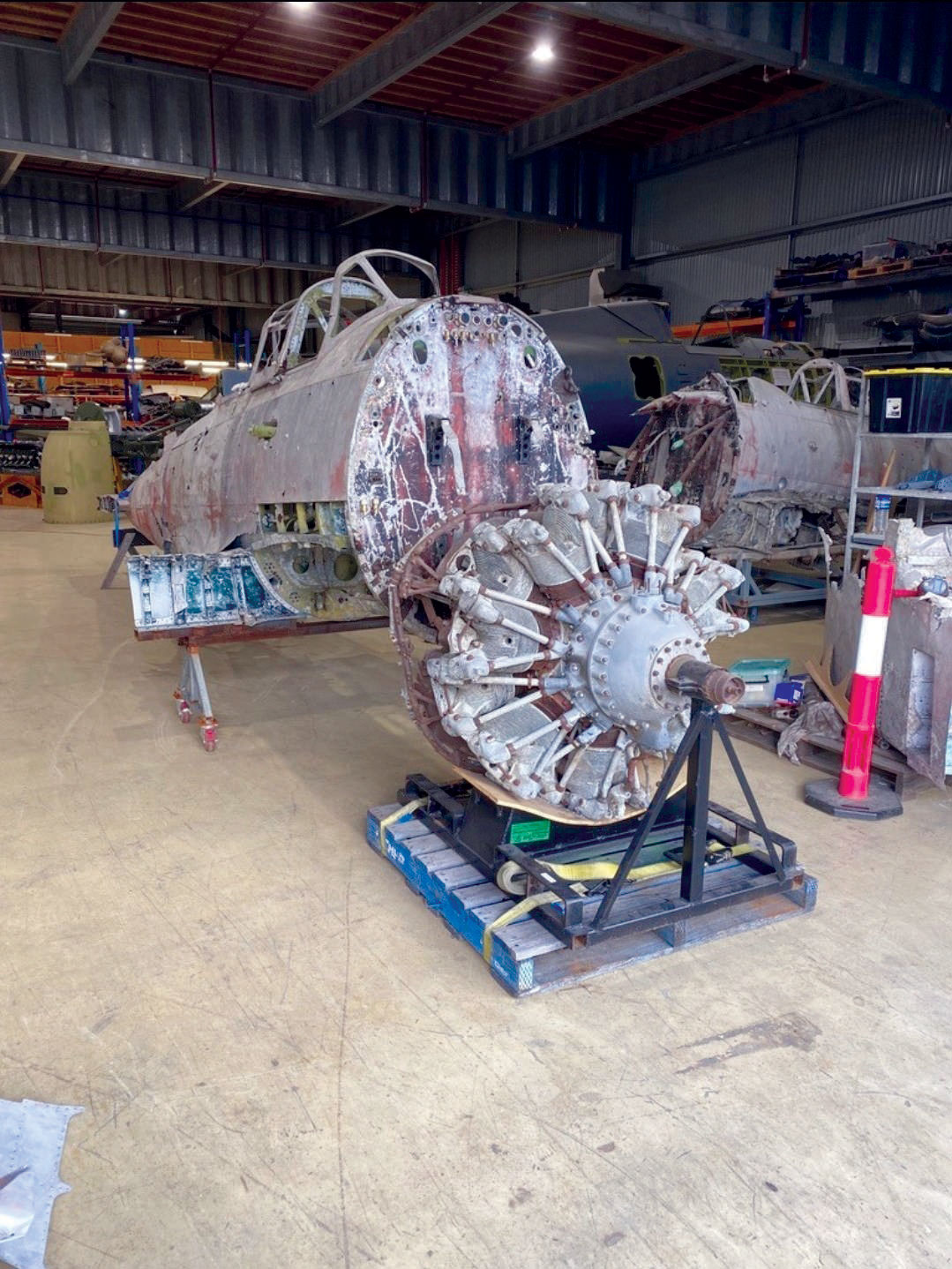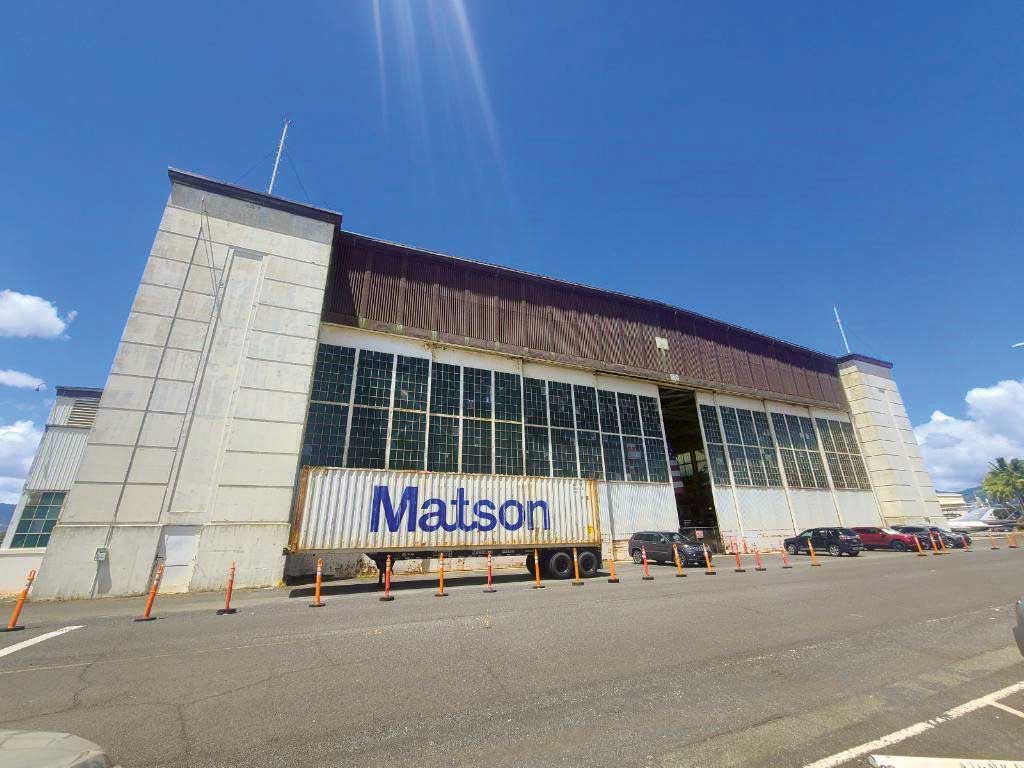
Pearl Harbor Aviation Museum Takes Off With Matson Employee’s Vision
Pearl Harbor Aviation Museum Takes Off With Matson Employee’s Vision

2022 Q4 - by John Sterling, Journeyman Mechanic, Oahu

This year marks the 16th anniversary of the Pearl Harbor Aviation Museum opening on Oahu, a project with which I’ve been deeply involved. On August 10, a Japanese Aichi D3A Type 99 Carrier Bomber (referred to by allied forces as a “Val”) coming from Australia arrived in Honolulu Harbor aboard Mahimahi. The Val is an extremely rare World War II Japanese dive bomber and one of the planes involved in the 1941 Pearl Harbor attack. With the arrival of this unrestored Val, the museum has completed its collection of the three Japanese attack planes used on that fateful day. Nowhere else in the world can these three aircraft be seen alongside their American WWII counterparts.
In 1995, we celebrated the 50th Anniversary of the end of WWII, and I became involved with Oahu’s commemoration ceremonies. Vintage planes had been brought to Hawaii and launched from the aircraft carrier USS Carl Vinson to participate in anniversary ceremonies at various military bases around the island. Organizers asked me to help complete the last piece of a vast, patriotic puzzle between the U.S. Navy and civilian warbird owners. I was to assist in returning the flyable WWII warbirds from their various celebration locations to the Vinson docked in Pearl Harbor.

As a resident of Oahu and a former merchant mariner chief engineer on ocean-going tugboats, I had vast experience with harbors, docks, and barges. I was asked to scout locations and
equipment within Pearl Harbor to move the delicate planes to the carrier after their airshow performances.
In 1996, inspired by those commemorative events, I developed the concept of an aviation museum in Pearl Harbor. I phoned Bob Lumbard, president of The Air Force of the Potomac, a California nonprofit organization, who had arranged to bring the vintage planes to Hawaii in 1995. Bob’s response was very positive. He appointed me vice president and board member of the “new” organization, the Pearl Harbor Aviation Museum (changed from The Air Force of the Potomac), and gave me the go-ahead to try and make it happen.

The USS Arizona Memorial at Pearl Harbor is one of Hawaii’s biggest tourist attractions, hosting more than 1 million visitors annually. Being familiar with Ford Island, the heart of Pearl Harbor, and an active duty military installation, I thought, what better location to house an aviation museum than in the still standing vintage hangers on Ford Island that withstood the Japanese attack in 1941? I felt such a museum would undoubtedly benefit from the established tourist presence at Pearl Harbor.
During the 1996 holiday season, I drafted a letter to the U.S. Navy outlining my concept for utilizing the hangers on Ford Island for the Pearl Harbor Aviation Museum. To my surprise, I received an enthusiastic response from Pearl Harbor Navy Base Captain John Shrewsbury, representative of Rear Admiral Woody Sutton, asking for more details on my proposal. They were considering a strip mall for the inside of hangar 79, the largest building on Ford Island, so the timing was perfect.

I was honored to meet with past Matson President Robert J. Pfeiffer, a big aviation supporter, to discuss the new museum effort gaining momentum. I also invited a few high-profile Honolulu community leaders onto the board of directors, most notably Admiral Ronald J. Hays. Eventually, we obtained a fresh 501(c)3 (nonprofit designation), and the museum started to move forward.
As a mechanic, I often had to quickly change out of my coveralls into aloha attire to attend numerous meetings the Navy held about the partial development of Ford Island, including the aviation museum. Shift scheduling at Matson’s Sand Island yard shop allowed me to attend these meetings. I truly believe that had I not worked for Matson, the museum would never have come to fruition.
The following years were a whirlwind of progress and countless meetings with Ford Island and the developing aviation museum board, all the while holding down the night shift at Matson Terminals, Inc. After much hard work and perseverance, the museum finally opened its doors in 2006.
One of Matson’s visions is to improve the communities in which we work and live, and their support for the Pearl Harbor Aviation Museum has been tremendous. Matson has shipped all of the WWII planes currently on display, some from as far away as Australia, providing free or heavily discounted shipping costs.
My appreciation goes beyond words. Mahalo, Matson!
